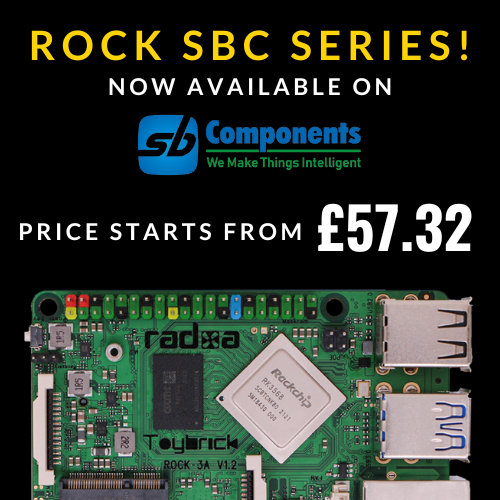Raspberry Pi Pico RP2040 $5 Super Tiny Computer
Planning a sub-$5 super tiny computer system involves various demanding selections. Categories such in which instruction set architecture (ISA) to make utilize of along with that category of processor internet protocol address to pick from inside eco system as a way to equilibrium value tag, performance and power. Afterward you'll find manufacturing and design inquiries: who is likely to plan exactly the device on chip (SoC) and who is likely to manufacture it?
Each one these criteria dictate the way useful and affordable that your ultimate product is best. Therefore in regards into choosing processor to electricity our very initial microcontroller-class solution, Raspberry-Pi Pico we understood we had to drive this price-performance ratio tougher than before.
Important Update:
Competition for Young Makers in China and the United States in 2021
The end consequence of this pushing may be that your Raspberry-Pi RP2040 SoC, a remarkably strong however radically cheap micro-controller packing double Arm Cortex-M0+ chips, probably the many energy efficient volt processor accessible. We built that the RP2040 SoC to provide maximum overall functionality from the smallest electrical electricity: at summit operation, the RP2040 SoC sips vitality. So if idle, it absorbs less than the usual milliwatt--that has crucially minimal energy intake for deeply embedded software, allowing long-duration performance with somewhat tiny batteries.
Whilst the RP2040 SoC is dependant over the high-clocked double Cortex-M0+, it is an unusually excellent platform for both end-point AI, or even maybe more exclusively TinyML. Even the TensorFlow Lite Micro library has been flashed into the RP2040, allowing users to manually conduct system learning (ML) variants to-do sensor-based investigation like image and voice recognition along with accelerometer-based gesture recognition.
The processor's low cost opens the entranceway to ubiquity: as an instance, an RP2040 SoC in most light change at house, maybe perhaps not merely responding to fundamental metering orders but accepting advice from detectors and carrying out on-chip m l to adjust lighting degrees in line with time of occupancy or day.
Joining Physical And Digital Worlds Together Using RP2040 SoC
That is only 1 use instance outside of quite a few people are expectant of the RP2040 SoC to empower: we picture use-cases in software that range from standalone toys into networked Net of objects (IoT) apparatus observation industrial petroleum pipelines.
However, people comfortable with Raspberry-Pi could wonder exactly what prompted this movement in to micro-controllers immediately right soon following 8 decades of creating services and products effective of conducting a object-oriented functioning system (OS) such as Linux.
To remedy this, we will have certainly to think about that lots of current apps for Pi join into the actual universe --bridging hardware and software, examining through detectors and forcing actuators. We have viewed Pi used to track detectors in the International Space Station (ISS), or even form cucumbers in Japan. These esoteric software reveal the width of Pi's functionality, nevertheless Raspberry-Pi doesn't encourage analogue enter --and also applications functioning beneath a simulated OS isn't ideal for Low Latency manage of human input/output (I/O) hooks.
This isn't at all some thing we felt that the should address our center services and products as you can find a lot of accessories accessible to give analogue I/O should you require it. But think that in its lowest energy mode, a Raspberry Pi Zero will absorb the purchase price of one hundred milliwatts. This ability condition becomes quite a obvious obstacle for most users wishing to use Raspberry-Pi to get ultra low power Web of objects (IoT) and embedded software along with milliwatt ingestion measured in only digits.
Adaptive I/O Allows Raspberry-Pi Pico To Speak To Any Outside Apparatus
That is exactly what the RP2040 SoC is intended to reach: remarkably excellent effectiveness, ultra-low strength ingestion and adaptive, dependable I/O. The very minimal latency of peripheral accessibility by way of the Cortex-M0+ SIO bus provides deterministic and dependable interaction together using all outside apparatus. By blending Cortex-M0+ together using all our patent-pending PIO sub-system, we are in a position to speak to any outside port ordinary using' little banging' (making use of applications and cushioned hardware for a stand-in for committed gear ). Since this can be a double Cortex-M0+ processor, it is absolutely feasible to possess one chip specializing in piece banging and one other specialized in code.
Per week as launching, we are seeing some wonderful cases of little slamming working with the RP2040's I/O. 1 Raspberry-Pi fan, Graham Sanderson, assembled a full BBC Micro emulator in just per week of launching, with all PIO to emulate VGA images output signal and sound through the Raspberry-Pi Pico's I/O pads.
It strikes me entirely fitting the BBC Micro--that the 500 educational video which played with a critical function within the invention of Arm--could currently be attracted to life span to a 4 Arm-powered board.
Credit: James Adams, COO and Director of Hardware, Raspberry Pi


















.png)




